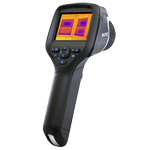Thermography or Thermal Imaging
What is Thermography?
All objects with a temperature above absolute zero emit infrared radiation. The amount of infrared radiation an object emits increases with temperature. Thermography (also commonly called Infrared (IR) or Thermal Imaging) is a science and a non-invasive method for detecting temperature variations related to heat. While a regular camera basically is a light sensor, capable of creating images by detecting tiny differences in light, an infrared (IR) or thermal camera is essentially a heat sensor capable of creating electronic images based on the interpretation of temperature differences across surfaces.

How is Thermography helpful during a home inspection?
Infrared or thermal imaging technology not only compliments the conventional home inspection methods, it offers key advantages as it can help identify – or rule out – problem areas that may not immediately be seen with the naked eye. Thermography can increase the likelihood of detecting:
- Missing, inconsistent, or wet insulation
- Heating and cooling losses around windows, doors, electrical outlets, etc.
- Leaky or disconnected duct work
- Broken seals in thermal pane windows
- Moisture issues such as roof leaks, plumbing leaks, leaky skylights, leaky foundations, moisture ingress
- Electrical hot spots
- Poor construction
- Damaged or malfunctioning in-floor heat
- Signs of rodents or insects
As an avid proponent of thermography a thermal scan is included in all home inspections I do, rather than offering it as an add-on service.
